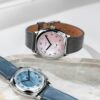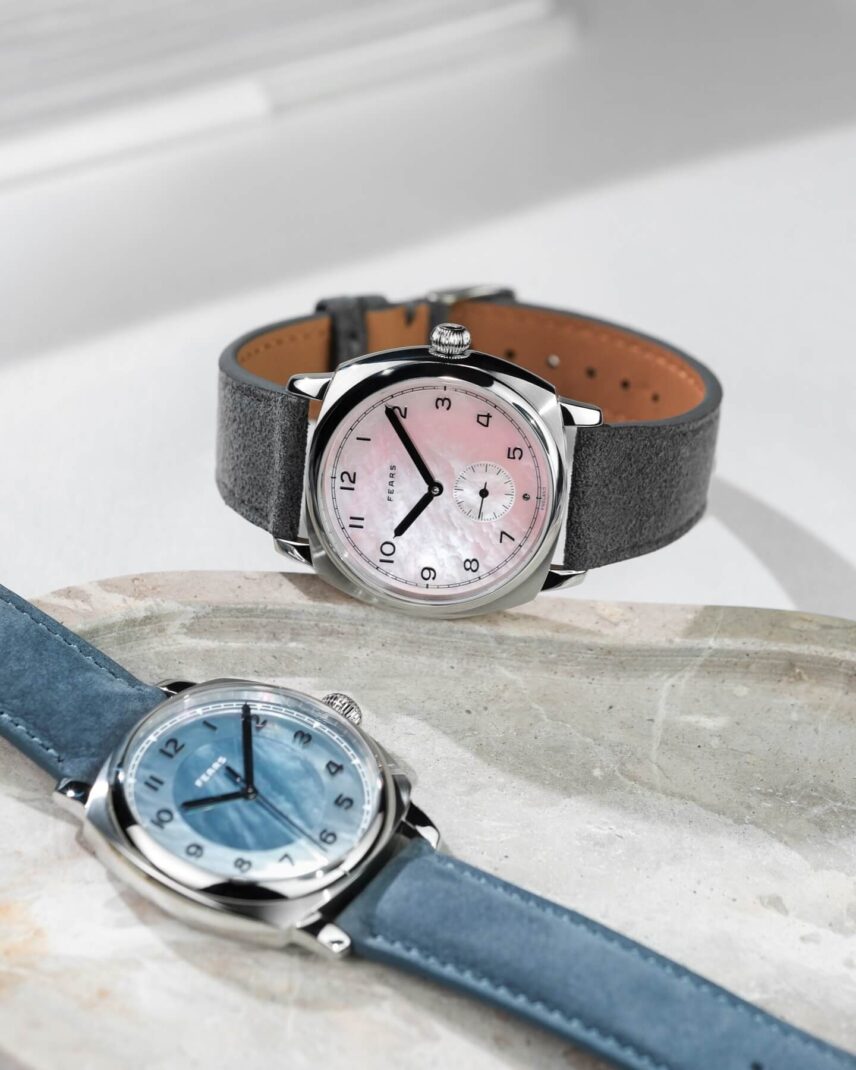This story originally appeared on the Gents Cafe Newsletter. You can subscribe here.
Animated by an authentic love for watches from a young age, Nicholas Bowman-Scargill decided to pursue a career in investment banking, attracted by a well-paying job that could allow him to chase his passion and build a watch collection.
However, the 2008 financial crisis forced him to rethink his life plans, eventually training to become a watchmaker. When he unexpectedly discovered his great-grandfather used to run one of England’s biggest watch companies, all pieces of the puzzle finally fitted together, and he decided to relaunch Fears Watches—the family brand that had been inactive since 1976.
In this Brand Talks interview, Nicholas shared his thoughts on British heritage, his approach to it, and why at Fears they made a commitment to making things slowly and carefully.
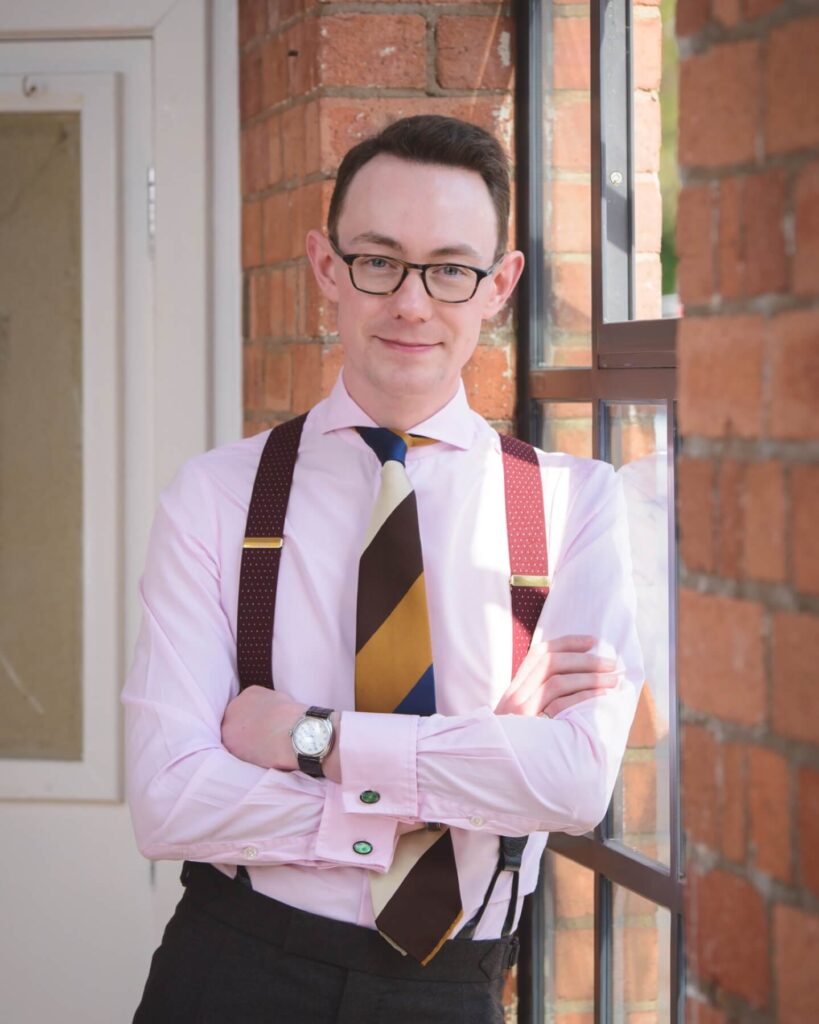
Besides your role at Fears, what personal passions or hobbies do you pursue and how do they influence the way you lead the brand?
I’ve always had a strong interest in clothes — and I blame my father for that. He’s an incredibly stylish man. Not fashionable in a trend-driven way, and he doesn’t spend a lot on clothes, but he has an amazing eye for putting colours, textures, and designs together. I remember being fascinated by that even as a kid.
One memory really stuck with me. I must have been around 12, and my parents were hosting a dinner party. They were always the kind who encouraged us to interact with adults, so I went into the room to chat. I remember looking around and thinking: I’ll never be the funniest person here, or the best looking, or the wealthiest, or even the most interesting. But the best dressed person? Everyone notices them. It’s a quiet kind of power — the way someone walks into a room, not necessarily dressed formally, but well put together, with real confidence. That made a big impression on me, and ever since then I’ve appreciated the value of dressing well.
Even when I travel, especially to places like Milan, I always bring something small back — an accessory, a detail. But the real takeaway is people-watching. I love sitting at a café and observing how people dress, particularly the older generations. In Italy, for example, you can instantly tell the difference between an Italian grandfather and a British one — it’s not just the clothes, but how they carry themselves.
Beyond clothes, I’ve always been obsessed with transport — and that nearly shaped my career as much as watchmaking did. Trains, in particular, are a big passion of mine. I don’t own a car; I take the train almost everywhere. I absolutely love them — the mechanics, the elegance, the efficiency. Same goes for airplanes and big ships — especially passenger transport. There’s something so telling about how a country moves its people. Public transport reveals so much about a place’s character.
That said, I do love cars — not the fast and flashy kind, but big old luxury saloons. Over the years, I’ve had a 1970s Rolls-Royce (which was wildly expensive to maintain), a Jaguar, and most recently a big old Cadillac. I love the idea that for five or ten grand, you can buy something that might not make you look like a millionaire, but definitely makes you feel like one. Driving to the supermarket or IKEA in a Rolls — people smile, wave, give you a thumbs up. It’s great fun.
So yes, my interest in clothes and transport definitely feed into how I lead Fears. It’s all about detail, legacy, and creating experiences that make people feel something.
Do you remember the first time a watch truly captivated you—not as an object, but as something more?
There are actually two moments that really stand out. The first was when I was about eight or nine years old. I remember seeing an advert for the Rolex Day-Date. You know, the one with the day of the week displayed across the top and the date window below. But what really caught my eye, even at that age, was this tiny design detail: along the minute track, just outside the hour markers, were these little Roman numerals. It was such a subtle touch, but I remember thinking, why don’t all watches show the day of the week like this? It just felt so logical. You read the time, then the date — Tuesday the 23rd, for example — and here was a watch that presented that information in the exact order your brain processes it.
At the time, I didn’t know anything about Rolex as a luxury brand — this was the ’90s, when watches weren’t particularly trendy. I wasn’t thinking “I want to own this one day”. I just found it an incredibly clever piece of design. That was the first time a watch really spoke to me.
The second moment came much later, around 2012 or 2013, when I was working at Rolex as a watchmaker. Hermes — best known, of course, for their leather goods and fashion — launched a watch called Le Temps Suspendu. On the surface, it looks like a typical watch, with an hour and minute hand and a retrograde date display (where the date hand moves from 1 to 31, then snaps back to 1). But the magic happens when you press a button on the side: the hands jump to an imaginary time — the minute hand a few minutes before the hour, the hour hand just after — and the date disappears completely. Mechanically, the watch keeps running. But visually, time is suspended.
I was completely taken by the romance of it. Because sometimes, when you’re with friends in someone’s garden on a sunny afternoon, with a beer in hand, it really does feel like time stands still. This watch captured that feeling — that perfect moment you wish you could freeze. And the fact that it does all this mechanically? That’s just brilliant. You press the button again, and everything snaps back to the correct time. It’s such a poetic idea: when life feels perfect, you pause it — and when you’re ready to rejoin the world, you let time catch up. That watch made me fall in love with the emotional power of horology all over again.
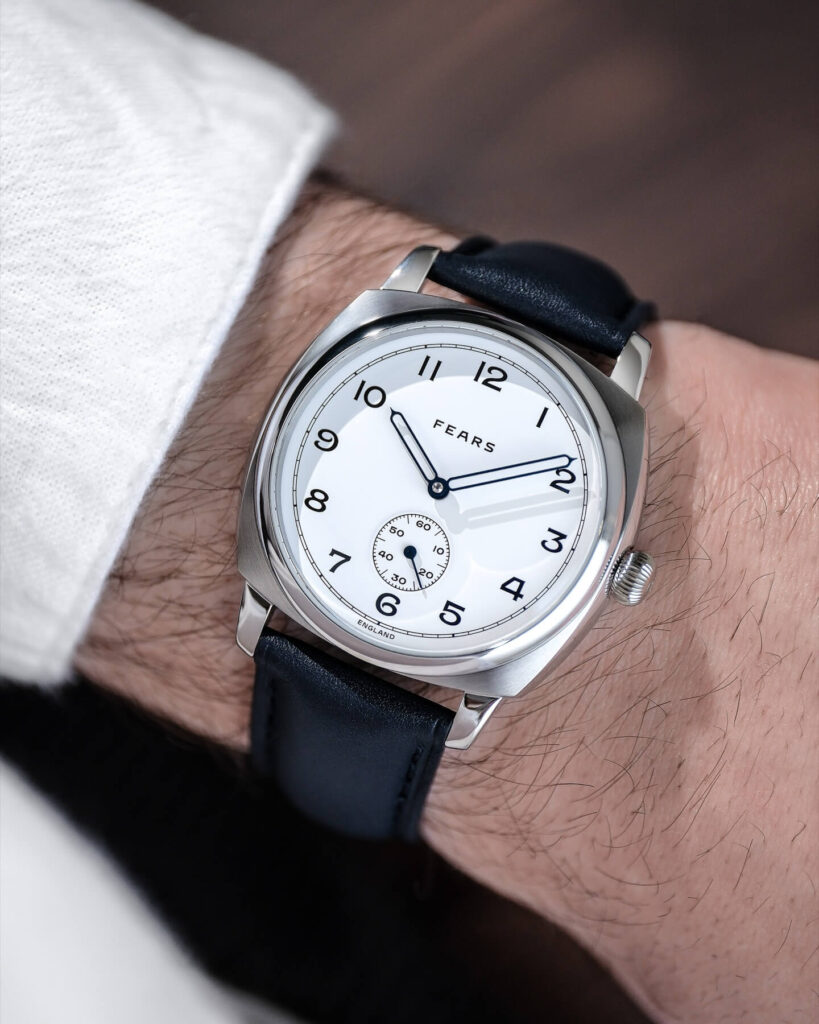
Then one day my mum casually says, “Darling, why don’t you restart the family watch company?” And I’m like, “What family watch company?”
Can you tell us a bit about your background? What was your personal journey before Fears?
My journey began back in school in the early 2000s. I was really into watches and quickly realized I’d need a well-paying job to afford all the watches I dreamed of owning. Back then, investment banking was the career—big money, status, “masters of the universe” and all that. So I studied pure economics at university and did an internship with Deutsche Bank in London. The plan was set: I’d become a banker. But when I graduated in 2008, the global financial crisis hit. So I lost my job prospect at Deutsche and started scrambling for a new path.
That’s when I pivoted into PR and marketing. I spent three years at an agency, and I loved the creativity and working with clients. But I’m dyslexic, and constantly writing press releases and emails just wasn’t a natural fit for me. More than anything, I felt like there was no real legacy in the work. You’d launch a campaign, and then boom—it’s onto the next thing.
So in 2010, I started questioning what I really wanted to do with my life. I remember sitting down with my husband over Christmas—he’s a maths professor, so completely different to me—and he said, “Forget about the mortgage, forget you’re in your 20s. If you were 10 years old, what would you do?” That got me thinking. My two big passions were watches… and trains.
So I explored both options: become a train driver, or become a watchmaker. In the end, watchmaking had the edge. In 2011, I decided to make the switch. I wrote to every major watch company with a UK workshop, sending a two-page letter explaining why a degree in economics, an internship in banking, and three years in marketing made me a great candidate to become a watchmaker. It was a hard sell—but eventually, after seven months of interviews and tests, Rolex said yes.
That was a dream job. I couldn’t have asked for a better start in the industry. Rolex is an extraordinary company—surprisingly humble internally—and what really stuck with me was how independent they are. They don’t care what competitors are doing; they just stay true to their path. That’s a lesson that’s shaped how I run Fears.
But after two and a half years there, I had this moment that changed everything. I was meeting with a pension advisor, and at the end of the meeting, he made this throwaway joke: “Well, only 39 more years to go!” And I laughed along, but as I walked back down to my bench, I realized, This is it. This is my future. For 39 years, I’ll be repairing the same watches every day. It was a good job—stable, well-paid—but I felt like there had to be more.
At that point, I vaguely knew from my mum that some of my ancestors were watchmakers, but nothing more. Then one day my mum casually says, “Darling, why don’t you restart the family watch company?” And I’m like, “What family watch company?”
Turns out, my great-great-great-grandfather and great-grandfather weren’t just watchmakers—they were running the largest watch company in the West of England, based in Bristol. At its peak, Fears employed over 100 watchmakers. If there’s a better ‘Eureka’ moment, I haven’t heard it. Suddenly, everything clicked. I knew exactly what I wanted to do. Of course, the story doesn’t end there. I stayed at Rolex for another two and a half years, quietly working evenings, weekends, and lunch breaks to plan the relaunch. Then, in 2016, I left Rolex—and six months later, Fears was reborn.
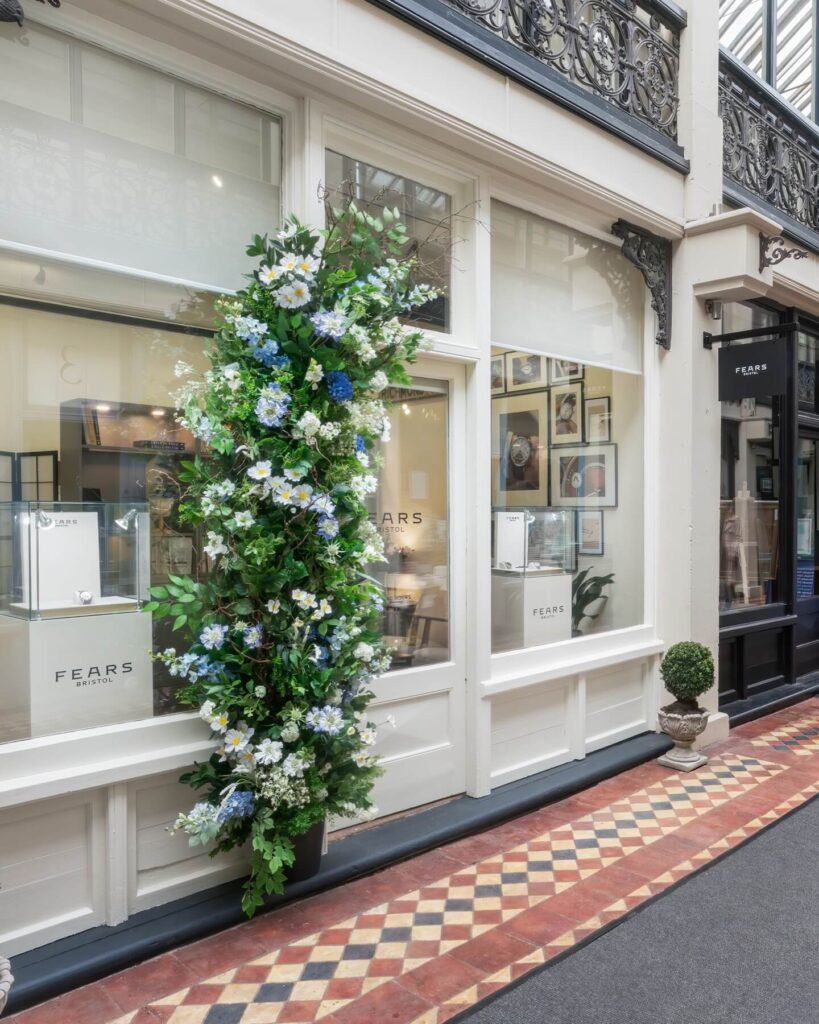
In 2016, you brought back a name that had been silent for 40 years. What moved you to do it and what moments, doubts, or turning points tested your commitment to that choice?
Looking back to 2016, I think there were two things that really motivated me. One was asking myself: What scares me more? Taking the risk of relaunching this brand and it not working out? Or waking up in my 40s stuck in a job I don’t love, unable to leave because of life’s commitments—mortgages, routines, expectations?
The second option scared me much more. I’ve never been a thrill-seeker—I’m not the kind of person who’d go skydiving. But I’ve always had a high tolerance for risk. And ever since I was young, my mum has always asked me, “What’s the worst that can happen?” Most of the time, the worst thing is just personal embarrassment. And that’s really nothing.
Especially when you consider that I came out as gay when I was 13. That led to five years of bullying, but it made me stronger—not weaker. If you can survive that at school, you learn early on that you can face big, scary things and come out the other side. So I’ve always believed in that cliché—which, in my case, is very true: you regret the things you don’t do far more than the ones you do.
Every year, I set myself at least one goal that gives me butterflies. Something that scares me just enough to know I’m growing. It doesn’t mean we take reckless risks as a company—I’m responsible for 12 people, their salaries, their mortgages—but it’s essential to keep moving forward. I remember when we were doing a tour in Singapore not long ago, I met a business owner who said something that really stuck with me. He said: “You underestimate what you can do in a year, and overestimate what you can do in a day.” I’d never heard anything more comforting or true. Because yes, most days I never get through my to-do list—but by the end of the year, I look back and think, How did we do all of that?
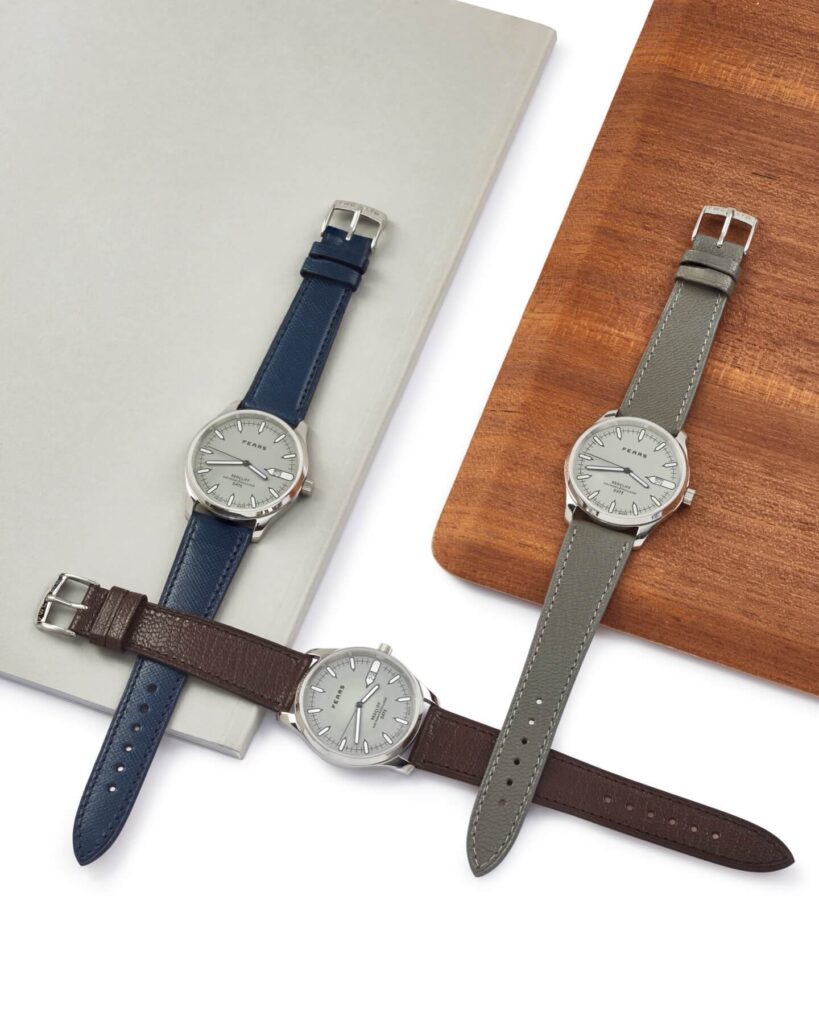
‘Elegantly Understated’ has become a signature for Fears. What does that phrase mean to you and how does it shape the design and spirit of your timepieces?
One of the most incredible things we have here in Britain is our heritage. We have an extraordinary history, rich with culture, tradition, and legacy. But the downside is that Britain often finds itself looking backward, relying too heavily on the past. When people think of “British design,” they tend to picture red telephone boxes, double-decker buses, the E-Type Jaguar, the royal family—all iconic, yes, but they risk becoming caricatures. What interests me more is the character of Britishness, not the cliché. To me, true British design is defined by elegance and understatement. That’s the core of Fears.
When I re-launched the brand, I wanted it to reflect that kind of authenticity—not the stereotypical Union Jack-waving version of Britain, but a more nuanced, quietly confident British spirit. That’s what “elegantly understated” is all about.
I often compare it to Italian cuisine. When people think of Italian food, they immediately think of pizza and pasta. But some of the best meals I’ve had in Italy didn’t include either. They were simple—beautiful meats, fresh salads—where the quality of the ingredients and the balance of flavours speak for themselves.
That’s the same approach I take with Fears watches. We don’t overdesign. We don’t shout. We focus on proportion, detail, and quality—the things that speak softly but leave a lasting impression.
What interests me more is the character of Britishness, not the cliché. To me, true British design is defined by elegance and understatement. That’s the core of Fears.
Talk me through the process of making a Fears watch.
We’re fortunate to have a 130-year archive, but we don’t treat Fears like a heritage brand. Instead, I see us as a modern British luxury watch company with heritage—similar to Rolls-Royce. The past informs our DNA, but we’re not here to recreate vintage designs. The guiding question is always: what would Fears be making today if it had never closed in 1976?
Most watches begin with my vision—an idea, a feeling, or even a specific detail I want to express. From there, I work closely with our in-house designer, who’s brilliant at translating that vision into something real. Then it moves through the four departments: design, operations (who turn the design into a working product), marketing, and commercial.
We don’t stick to one genre. Some pieces are more classic, others sportier—but all are united by a sense of elegance and understatement. That’s our core.
I’ll admit, I’m very involved in design—probably more than I should be! That said, I’m lucky to have a strong senior team around me. I listen to them, even when their ideas push me beyond my comfort zone.
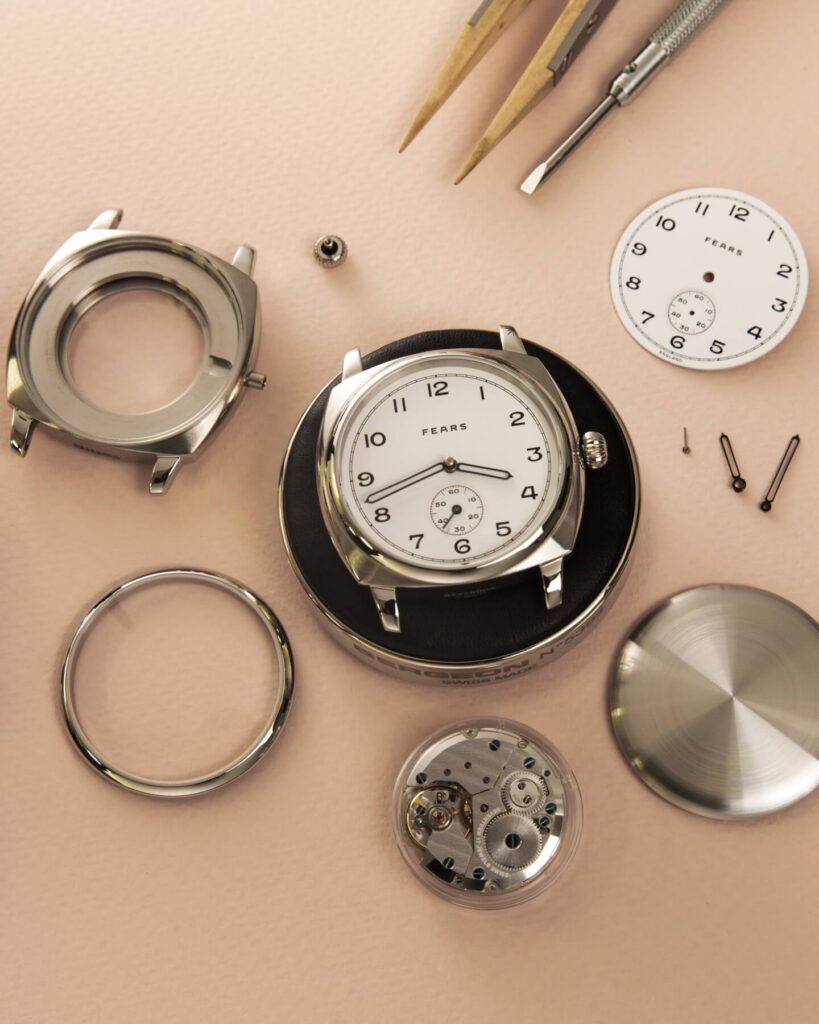
If you had to tell the story of Fears through three iconic pieces, which would you choose and why?
The first would have to be the Redcliff, the watch I relaunched Fears with in 2016. It was quartz-powered and modern in feel, but it carried clear threads of our historical design DNA. More than that, it was the first watch in nearly 40 years to bear my family’s name on the dial—which made it incredibly emotional for me. I still wear the Redcliff No.1 on every launch day, as a reminder of where it all began.
Second would be the original Brunswick, which launched a year later. That watch was a turning point—it elevated how people perceived the brand and set a new benchmark for what Fears could be. It was a bold step forward in both design and quality.
And third, I’d choose a watch from our archive: a sterling silver, cushion-cased piece from 1924. It inspired the Brunswick and is a reminder that Fears was making wristwatches earlier than many other brands. It represents both our legacy and the continuity of good design through time.
You can only build something that lasts by prioritising quality, patience, and a clear vision over speed and noise.
Choosing to limit production in favour of quality is a bold move in today’s fast-paced world. What guided that decision, and how do you stay true to that philosophy when everything around you pushes for more, faster, bigger?
I’ve been obsessed with brands since I was a kid. While most teenage boys had posters of pop stars, I had Cartier and Louis Vuitton ads on my wall. So I remember the period before the 2008 crash clearly—luxury became about boldness, logos, and flash rather than real quality. And after the crash, people turned back to craftsmanship and care. That left a mark on me.
Over the past few years, we’ve seen a similar cycle—luxury once again becoming about hype. But I’ve intentionally steered Fears away from that. We’re not chasing trends or trying to become a hype brand. We’re growing steadily, year after year, on the strength of old-fashioned quality. It’s not flashy, but it’s sustainable.
Fears doesn’t aim for fast growth or mass production. We focus on building trust—our warranty return rate is among the lowest in the industry, and that matters when someone spends thousands on a watch. People know our watches won’t let them down.
I think long-term. I see Fears as something that should outlive me—this is my legacy. And you can only build something that lasts by prioritising quality, patience, and a clear vision over speed and noise.
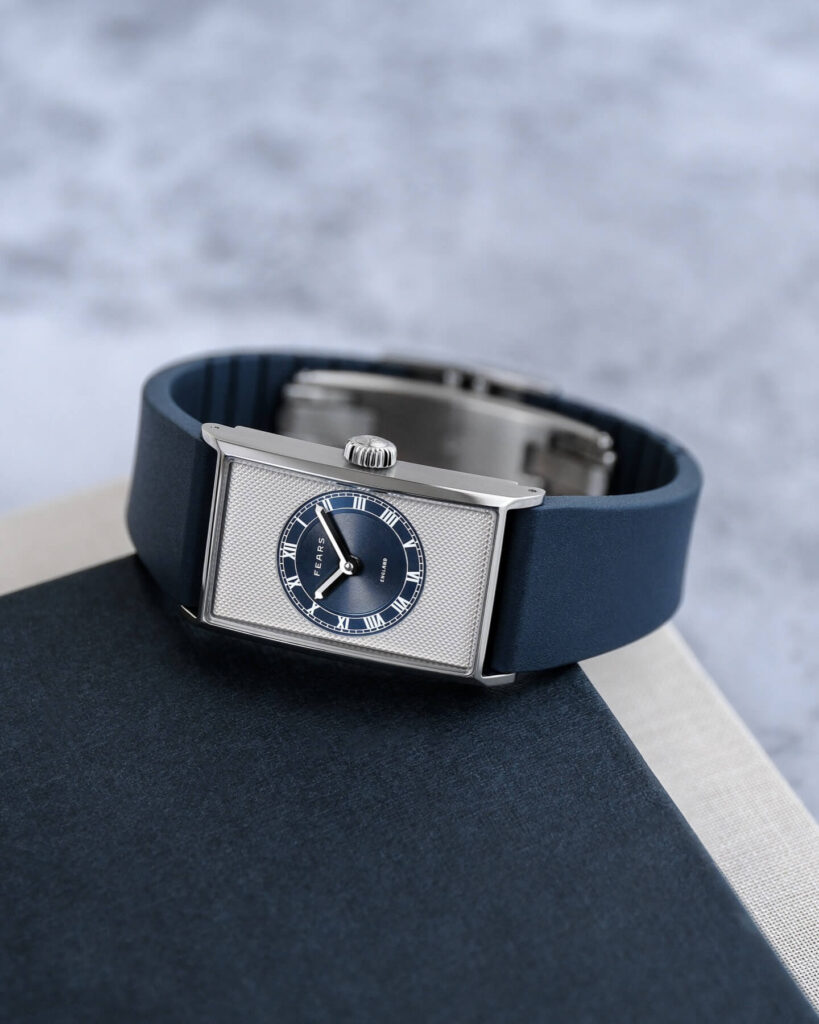
Publishing the book ‘Elegantly Understated’ was more than a celebration—it was a statement of identity. What did retracing 175 years of Fears’ history teach you, and what emotions surfaced as you turned those archival pages?
The book was never about selling more watches—it was about protecting the Fears legacy. That matters deeply to me. I live in North Yorkshire, but every week I take a four-hour train to Bristol because this is where Fears belongs. That same mindset guided the book.
Our 175th anniversary could’ve been a very commercial moment, but instead, I felt a duty to document our history properly. The book was researched and written independently, and I deliberately stayed hands-off. I didn’t want to cherry-pick stories or gloss over the fact that the company once shut down. It had to be honest.
What came out of that process was incredible. The author uncovered facts even we didn’t know. Now, I use the book as a reference—it’s that thorough. It’s also a way to share our story with people who love Fears but might not yet be in a place to buy one of our watches. Not everyone can spend thousands on a watch, but they can still own part of our story.
And for our loyal clients, gifting a signed copy is a meaningful way to say thank you. Ultimately, the book is a lasting testament to who we are—British, built on quality, and rooted in real heritage.
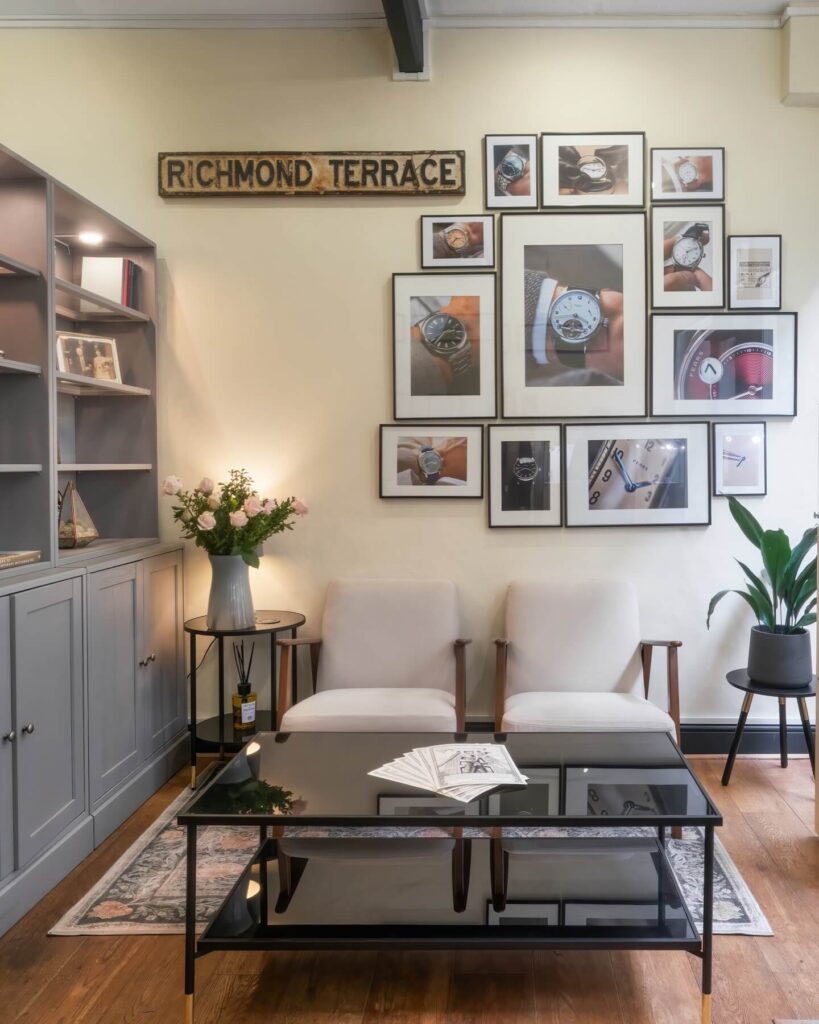
Has working so intimately with time changed your personal relationship with it?
If you ask my family or husband, I’m still always late! I tend to overestimate what I can do in a short time. But as I’ve grown and learned running Fears, I now appreciate the importance of slowing down—doing fewer things but giving them more focus.
I value time away from work more than ever. Simple rituals, like stopping for a quiet beer in the sunshine or carefully making loose-leaf tea (we even have our own Fears blend!), help me reconnect. Small acts like taking extra care getting dressed in the morning to feel my best—these moments deepen my appreciation of time beyond just the watch on my wrist.
Is there a book, film, journey or place that has particularly inspired your life, or the direction you’ve taken with the brand?
A book that really shifted my perspective was Rich Dad Poor Dad. In my case, it wasn’t about learning to make money, but about questioning the usual path we’re all expected to follow—like the standard career ladder—and deciding if that’s truly what I wanted.
As for a place, the North Yorkshire Moors have been deeply inspiring. It’s a remote, beautiful area with no mobile signal, perfect for clearing your head and reconnecting with yourself. Sometimes, it’s very good for the soul to just be away from everyone and everything.

